42 label the parts of a compound microscope
rsscience.com › stereo-microscopeParts of Stereo Microscope (Dissecting microscope) – labeled ... The difference between Compound and Stereo (Dissecting) Microscope. Unlike a compound microscope that can only see a very thin specimen, stereo microscopes can be used for viewing almost anything you can fit under them. However, stereo microscopes offer lower magnification, typically 5x-50x, comparing to compound microscopes. Labeled Compound Parts Microscope [B76CYG] Search: Compound Microscope Parts Labeled. Label the parts of the compound light microscope: Arm While mice come in a variety of shapes and sizes, their basic parts and functions remain similar _____Contains a magnifying lens which you look into _____Hold the slide in place 6th - 7th grade Microscope Parts & Specifications Historians credit the invention of the compound microscope …
Compound Microscope - Diagram (Parts labelled), Principle and Uses What are the 13 parts of a microscope? 1. Eyepiece 2. Eyepiece Tube 3. Objective Lens 4. Stage 5. Stage Clips 6. Nosepiece 7. Fine and Coarse Focus knobs 8. Illuminator 9. Aperture 10. Iris Diaphragm 11. Condenser 12. Condenser Focus Knob 13. The Rack stop Q 5. What are the 11 parts of a compound microscope?

Label the parts of a compound microscope
Pond Water Under the Microscope Depending on the pond, students will be able to observe a variety of living things under the microscope. While students will be able to identify animal organisms under the microscope from the fact that they move, they may have some difficulty identifying some organisms, which may look like plants or fungi. 16 Parts of a Compound Microscope: Diagrams and Video Once you have an understanding of the parts of the microscope it will be much easier to navigate around and begin observing your specimen, which is the fun part! The 16 core parts of a compound microscope are: Head (Body) Arm Base Eyepiece Eyepiece tube Objective lenses Revolving Nosepiece (Turret) Rack stop Coarse adjustment knobs Compound Labeled Parts Microscope [B3WR9A] Search: Compound Microscope Parts Labeled. What is the total magnification of a microscope if its eyepiece is 10 X and the objective lens being used Compound Microscopes Defining Features Revolving Nosepiece or Turret: Turret is the part of the microscope that holds two or multiple objective lenses and helps to rotate objective lenses and also helps to easily change power Compound Microscope ...
Label the parts of a compound microscope. compound microscope parts (labeling) Flashcards | Quizlet what is 1? nosepiece (turret) - holds and spins the objective lenses what is 2? 4x objective lens - the 'scanning" objective lens with the lowest magnification what is 3? 10x objective lens - the "low" power objective lens what is 4? 40x objective lens - the "high" power objective lens with the most magnification what is 5? Virtual Labs: Using the Microscope - GameUp - BrainPOP. In this free online science interactive, students learn the procedures for operating a compound optical light microscope as they would use in a science lab. bVX0-zncj9qJ3G1_r18rkIpQL02X-Oi6tWViR4g4-vwDVmU50WZA-4bRZMjM2TXmc88PAkJ1g0jIembnEbM UD Virtual Compound Microscope - University of Delaware ©University of Delaware. This work is licensed under a Creative Commons Attribution-NonCommercial-NoDerivs 2.5 License.Creative Commons Attribution-NonCommercial-NoDerivs 2.5 License. www1.udel.edu › biology › ketchamMicroscopy Pre-lab Activities - University of Delaware Microscope controls: turn knobs (click and hold on upper or lower portion of knob) throw switches (click and drag) turn dials (click and drag) move levers (click and drag) changes lenses (click and drag on objective housing) select a specimen (click on a slide)
Labeled Microscope Compound Parts [J1IAL8] Search: Compound Microscope Parts Labeled. They can make objects look 100 to 400 times as big as they really are Download the Label the Parts of the Microscope: Answers PDF printable NOSEPIECE microscope when carried Holds the HIGH- and LOW- power objective LENSES; can be rotated to change MAGNIFICATION Parts of a Compound Microscope · Eyepiece (ocular lens) with or without Pointer: The part ... Parts of a Compound Microscope (And their Functions) - Scope Detective List of Microscope Parts and their Functions 1. Ocular Tubes (Monocular, Binocular & Trinocular) The ocular tubes, are to tubes that lead from the head of the microscope out to your eyes. On the end of the ocular tubes are usually interchangeable eyepieces (commonly 10X and 20X) that increase magnification. Solved Please label the parts of the image to assess your | Chegg.com Question: Please label the parts of the image to assess your knowledge of the compound light microscope Aperture diaphragm control Stage adjustment nob Fine adjustment knob Arm Objective lens Coarse adjustment nob Mechanical stage Ocular lens Base Reset . This problem has been solved! Compound Microscope Labeled Parts [K8IOXN] The kinds and quantity of lenses that make up Parts of a Microscope with Their Functions Compound Microscope Parts Ndash Labeled … This online quiz is called Microscope Labeling Game science, microsope 2x6x20 Deck Boards The eyepiece is rotated so that the two scales, the eyepiece or ocular scale and the stage micrometer scale, are parallel The eyepiece is rotated so that the two scales, the ...
www1.udel.edu › biology › ketchamUD Virtual Compound Microscope - University of Delaware ©University of Delaware. This work is licensed under a Creative Commons Attribution-NonCommercial-NoDerivs 2.5 License.Creative Commons Attribution-NonCommercial-NoDerivs 2 Parts of the Compound Microscope - Houston Community College Parts of the Compound Microscope Use Figure 2 as a guide to locate the major parts of the compound microscope. a. Base: The bottom, flat part that supports the microscope. b. Arm: The straight or curved vertical part that connects the base to the upper portion. c. Body Tube: Extends from the arm and contains the ocular lens and the rotating Parts of the Compound Light Microscope (pull out an image to label ... Its power is 100x (remember to multiply that by 10) Lens/eyepiece. The lens at the top that you look through. They are 10X power. Base. The bottom of the microscope, used for support. Diaphragm. A rotating disk under the stage. Varies the intensity and size of the cone of light that is projected upward into the slide. Compound Microscope: Parts of Compound Microscope - BYJUS (A) Mechanical Parts of a Compound Microscope 1. Foot or base It is a U-shaped structure and supports the entire weight of the compound microscope. 2. Pillar It is a vertical projection. This stands by resting on the base and supports the stage. 3. Arm The entire microscope is handled by a strong and curved structure known as the arm. 4. Stage
Compound Microscope Parts - Labeled Diagram and their Functions There are three major structural parts of a compound microscope. The head includes the upper part of the microscope, which houses the most critical optical components, and the eyepiece tube of the microscope. The base acts as the foundation of microscopes and houses the illuminator. The arm connects between the base and the head parts.
Parts of a Microscope - Lab Manual for Biology 2e Part I, 2nd edition Activity 1: Parts of a Microscope. A microscope magnifies the image of an object through a series of lenses. The condenser lens focuses the light from the microscope's lamp onto the specimen. The light then passes through the object and is refracted by the objective lens. The objective lens is the more powerful lens of a microscope and is ...
Subject Pronouns Worksheets - Easy Teacher Worksheets Subject pronouns are used as the subject of action words. The usually take the place of regular nouns. They really give mean to thing, person or place. They point to the meaning of the passage or reading. When the sentence is restricted to a few lines, this personal noun helps pin point the object or person that is under the microscope.
Intro Lab Assignment.docx - Exercise 1A - Parts of the compound ... Exercise 1A - Parts of the compound microscope Write the correct label for each part of the microscope shown below: Exercise 1B - Using the compound microscope Match each part of the compound microscope on the left with its function on the right: __h__ base and arm A. eyepiece, what you look in to see an image __g__ coarse focus knob B. adjusts position of slide left/right, front/back ...
LabRAM HR Evolution - HORIBA Confocal Raman Microscope. The LabRAM HR Evolution Raman microscopes are ideally suited for both micro and macro measurements, and offer advanced confocal imaging capabilities in 2D and 3D. The true confocal Raman microscope enables the most detailed images and analyses to be obtained with speed and confidence.
Compound Microscope Labeled Diagram | Quizlet Contains the ocular lens Body tube A hollow cylinder that holds the eyepiece. Arm Part that supports the microscope. Stage Supports the slide or specimen Coarse adjustment Knob sed to focus when using the low power objective lenses Fine Adjustment Knob Used to focus the image on high power to view image in more detail. Revolving nose piece
Compound Microscope- Definition, Labeled Diagram, Principle, Parts, Uses Parts of a Compound Microscope Eyepiece And Body Tube. The eyepiece is the lens through which the viewer looks to see the specimen. It usually contains a 10X or 15X power lens. The body tube connects the eyepiece to the objective lenses. Objectives and Stage Clips Objective Lenses are one of the most important parts of a Compound Microscope.
Parts of Stereo Microscope (Dissecting microscope) – labeled … The difference between Compound and Stereo (Dissecting) Microscope. Unlike a compound microscope that can only see a very thin specimen, stereo microscopes can be used for viewing almost anything you can fit under them. However, stereo microscopes offer lower magnification, typically 5x-50x, comparing to compound microscopes.
Definition and Examples of Compound-Complex Sentences 24/07/2019 · "If a compound or a compound-complex sentence has one or more commas in the first clause, you may want to use a semicolon before the coordinating conjunction between the two clauses. Its purpose is to show the reader very clearly the division between the two independent clauses." (Lee Brandon and Kelly Brandon, Sentences, Paragraphs, and Beyond, …
label parts of a microscope Quiz - PurposeGames.com This is an online quiz called label parts of a microscope There is a printable worksheet available for download here so you can take the quiz with pen and paper. From the quiz author label the correct names of the parts of the microscope This quiz has tags. Click on the tags below to find other quizzes on the same subject. microscope microscopy
Microscope Parts and Functions Objective lenses: One of the most important parts of a compound microscope, as they are the lenses closest to the specimen. A standard microscope has three, four, or five objective lenses that range in power from 4X to 100X.
Compound Microscope Parts Made Easy - Microscope Detective List and Diagram of Compound Microscope Parts: Head - The head is the uppermost part of the microscope that contains the eyepiece, tube, objective lens, and nosepiece. So all the optical parts of a compound microscope are in the head. Eyepiece - The eyepiece is the lens at the top, and the part you look through when using the microscope.
Parts of a microscope with functions and labeled diagram 17/09/2022 · Figure: Diagram of parts of a microscope. There are three structural parts of the microscope i.e. head, base, and arm. Head – This is also known as the body. It carries the optical parts in the upper part of the microscope. Base – It acts as microscopes support. It also carries microscopic illuminators.
microbenotes.com › parts-of-a-microscopeParts of a microscope with functions and labeled diagram Sep 17, 2022 · Figure: Diagram of parts of a microscope. There are three structural parts of the microscope i.e. head, base, and arm. Head – This is also known as the body. It carries the optical parts in the upper part of the microscope. Base – It acts as microscopes support. It also carries microscopic illuminators.
Compound Microscope Parts, Functions, and Labeled Diagram Compound Microscope Definitions for Labels. Eyepiece (ocular lens) with or without Pointer: The part that is looked through at the top of the compound microscope. Eyepieces typically have a magnification between 5x & 30x. Monocular or Binocular Head: Structural support that holds & connects the eyepieces to the objective lenses.
Compound Microscope: Definition, Diagram, Parts, Uses, Working ... - BYJUS The parts of a compound microscope can be classified into two: Non-optical parts Optical parts Non-optical parts Base The base is also known as the foot which is either U or horseshoe-shaped. It is a metallic structure that supports the entire microscope. Pillar The connection between the base and the arm are possible through the pillar. Arm
Compound Parts Microscope Labeled [23QVLW] Start studying Microscope Parts and Functions Quiz December 2010 74 028 просмотров 74 тыс This source can also be an activity the students can practice on the computer The following article will cover information on its parts …. Compound microscope labeled diagram a microscope with one lens, which was first invented in the 17th ...
Microscopy Pre-lab Activities - University of Delaware Microscope controls: turn knobs (click and hold on upper or lower portion of knob) throw switches (click and drag) turn dials (click and drag) move levers (click and drag) changes lenses (click and drag on objective housing) select a specimen (click on a slide)
Binocular Microscope Anatomy - Parts and Functions with a Labeled ... The optical part of the compound light microscope includes - Condenser with iris diaphragm, Illuminator (light source), An objective lens of the microscope, and The eyepiece or ocular lens of the microscope So, the other parts of the microscope (except these four) are included under the non-optical components.
› compound-complex-sentenceDefinition and Examples of Compound-Complex Sentences - ThoughtCo Jul 24, 2019 · "The compound-complex sentence is so named because it shares the characteristics of both compound and complex sentences. Like the compound sentence, the compound-complex has two main clauses. Like the complex sentence, it has at least one subordinate clause. The subordinate clause can be part of an independent clause."
› games › virtuallabsusingthemicroscopeVirtual Labs: Using the Microscope - GameUp - BrainPOP. In this free online science interactive, students learn the procedures for operating a compound optical light microscope as they would use in a science lab. bVX0-zncj9qJ3G1_r18rkIpQL02X-Oi6tWViR4g4-vwDVmU50WZA-4bRZMjM2TXmc88PAkJ1g0jIembnEbM
Labeled Compound Microscope Parts [47K0WH] A compound microscope … Two different compound light microscope models with their parts labeled 8/7/2018 3 Compound Microscope •Lets light pass through an object and then through two or more lenses On the end of the ocular tubes are usually interchangeable eyepieces (commonly 10X and 20X) that increase magnification
Parts Microscope Labeled Compound [1IS5UL] Diagram of a Compound Microscope Compound microscope parts Compound microscopes can detect the presence or absence of minerals, as well as the presence or lack of metals In the figure, labeled 'F' is involved in the magnification and improvement of primary image produced Quizlet Test Answers In this image, you can see labeled parts of the microscope In this image, you can see labeled parts of ...
label parts of a compound microscope - TeachersPayTeachers Microscope Quiz by Quick Witted Owl Lesson Plans Made Easy 4 $1.99 PDF Students will need to label the parts of a compound light microscope and answer a 8 easy questions. A word bank is given at the bottom of the quiz.
smartschoolsystems.com › parts-of-a-microscope-2Parts of a Microscope - SmartSchool Systems Feb 06, 2021 · Sometimes microscope parts are listed as the 14 parts rather than the 12 parts as above. If asked for the 14 parts of a microscope, it is generally because the three objective lenses are listed individually instead of as a group. Here are the details:
Parts of a Microscope - SmartSchool Systems 06/02/2021 · Sometimes microscope parts are listed as the 14 parts rather than the 12 parts as above. ... Label specimen parts; Measure; Create quick assessments; ... Using a light or compound microscope may seem overwhelming, but it’s really quite easy. Just follow these easy steps to explore microscopic views:
Parts of a Compound Microscope and Their Functions - NotesHippo The main parts of compound microscope are the condenser lens, the objective lens, and the eyepiece lens, and these instruments are referred to as compound microscopes. Each of these components is made up of microscope lens combinations that are required to produce magnified images with minimal artefacts and aberrations. Structure of Microscope
Compound Labeled Parts Microscope [B3WR9A] Search: Compound Microscope Parts Labeled. What is the total magnification of a microscope if its eyepiece is 10 X and the objective lens being used Compound Microscopes Defining Features Revolving Nosepiece or Turret: Turret is the part of the microscope that holds two or multiple objective lenses and helps to rotate objective lenses and also helps to easily change power Compound Microscope ...
16 Parts of a Compound Microscope: Diagrams and Video Once you have an understanding of the parts of the microscope it will be much easier to navigate around and begin observing your specimen, which is the fun part! The 16 core parts of a compound microscope are: Head (Body) Arm Base Eyepiece Eyepiece tube Objective lenses Revolving Nosepiece (Turret) Rack stop Coarse adjustment knobs
Pond Water Under the Microscope Depending on the pond, students will be able to observe a variety of living things under the microscope. While students will be able to identify animal organisms under the microscope from the fact that they move, they may have some difficulty identifying some organisms, which may look like plants or fungi.

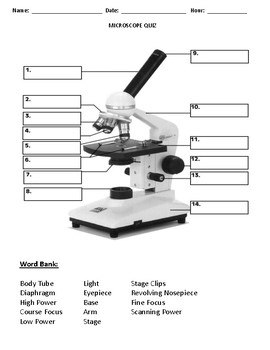



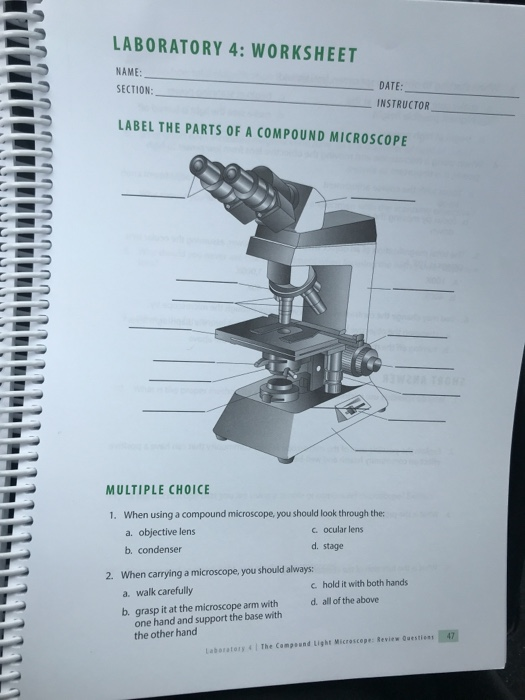

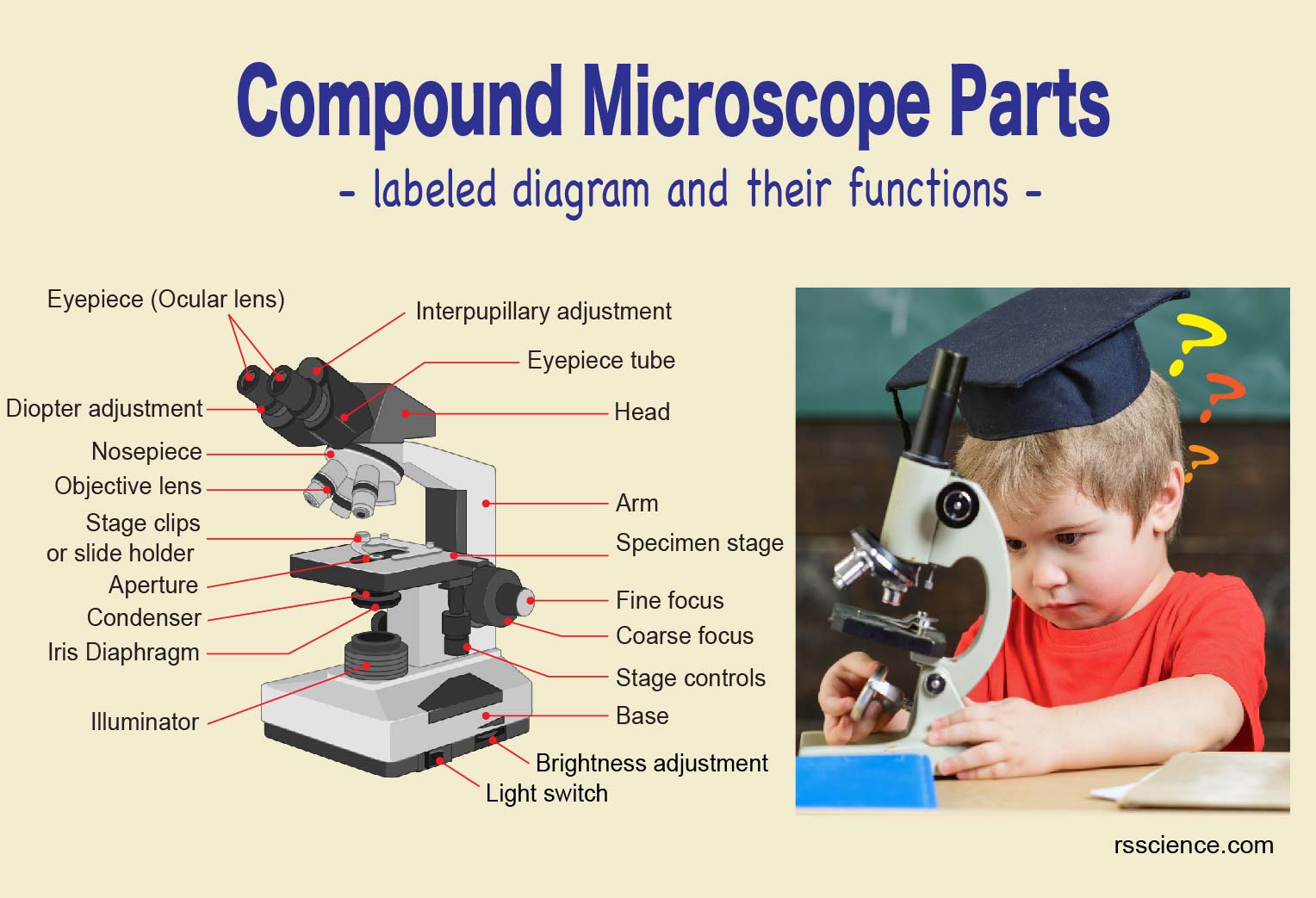


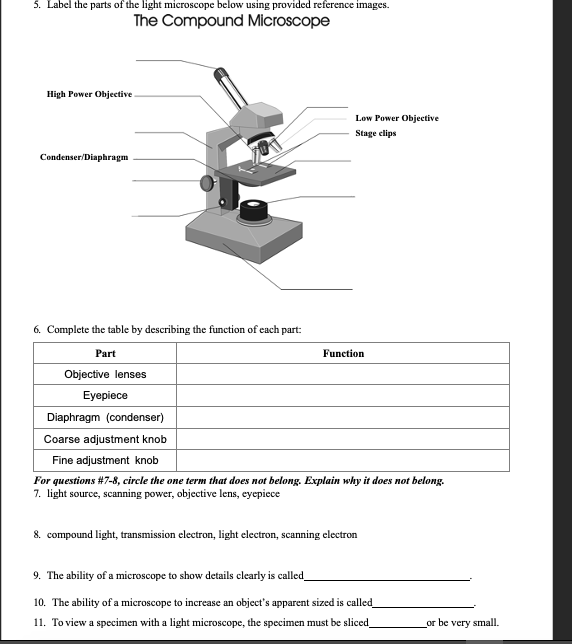




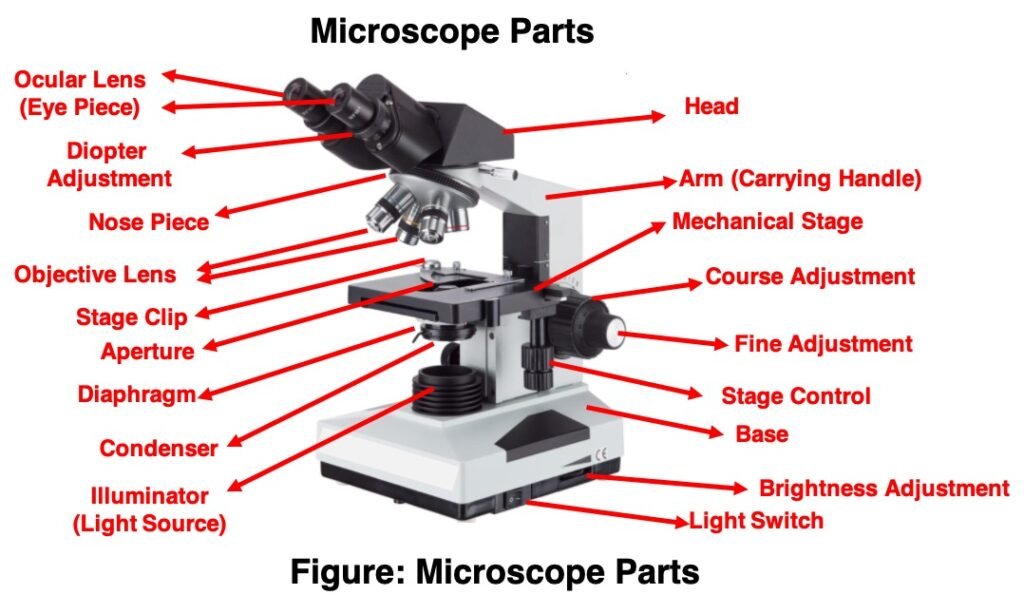
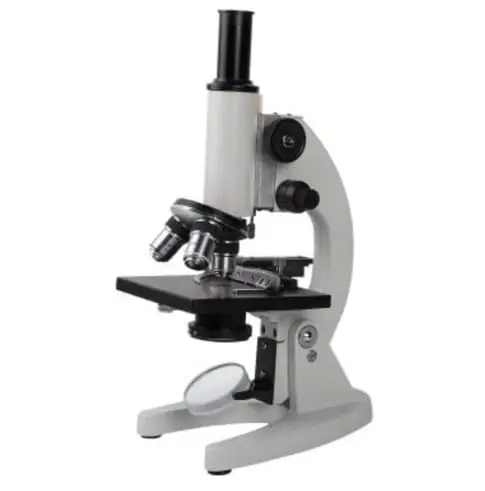

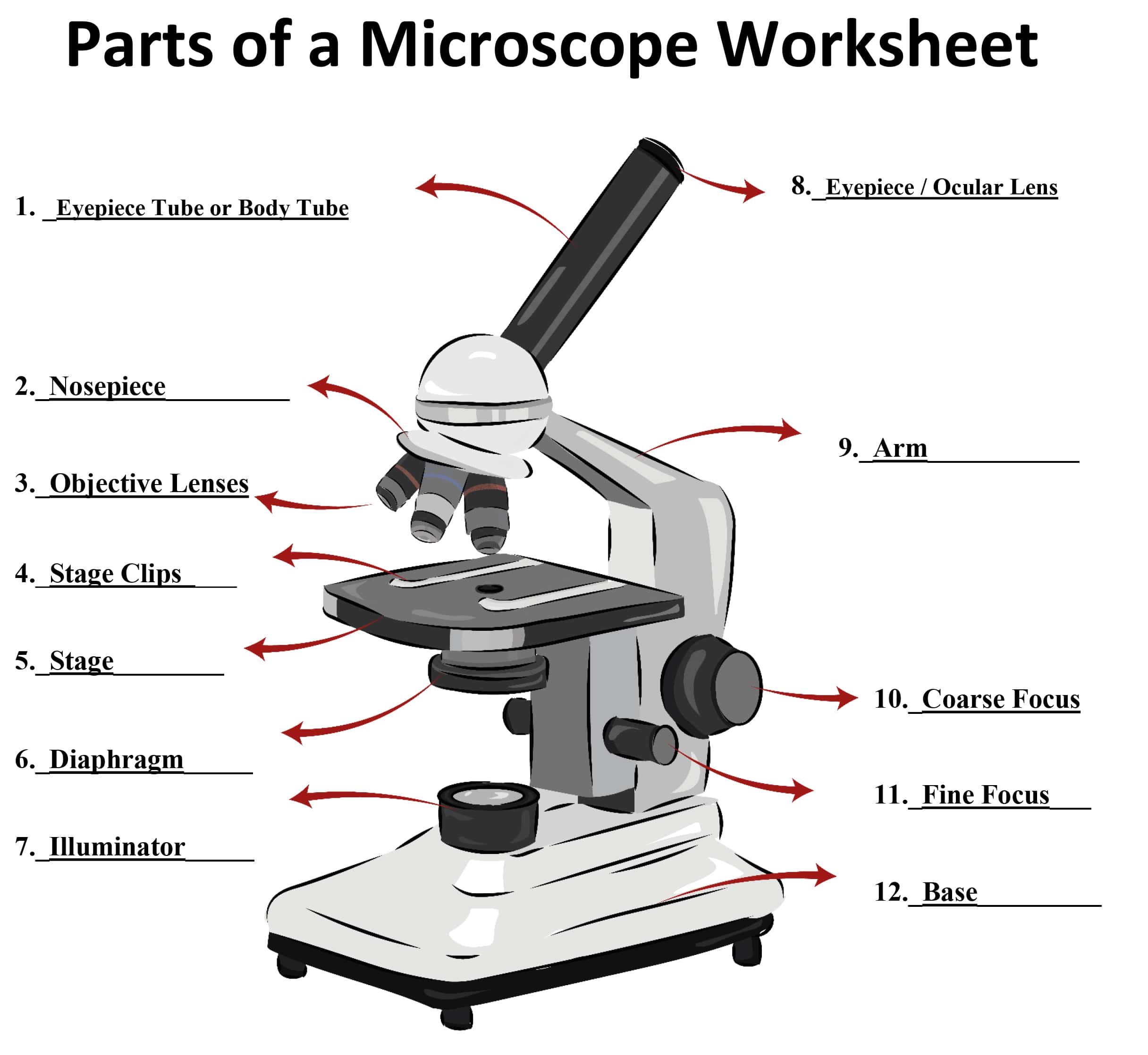


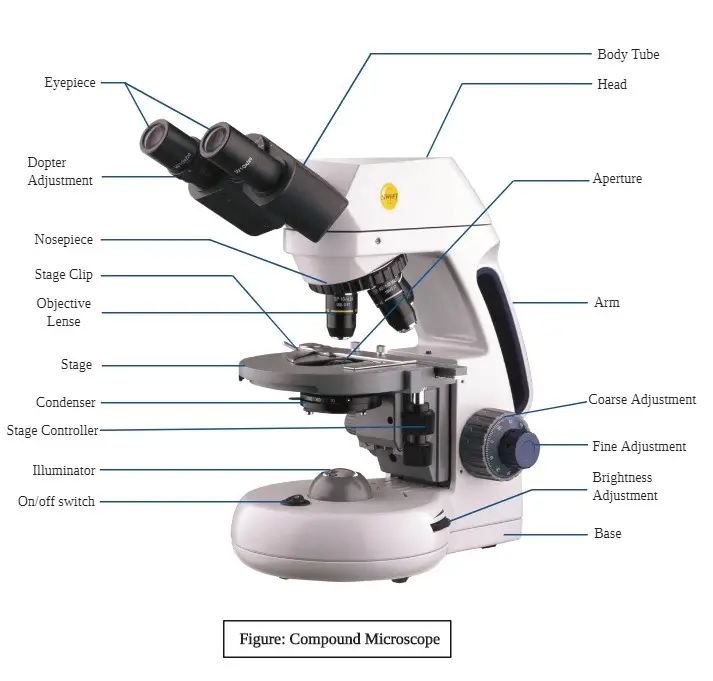







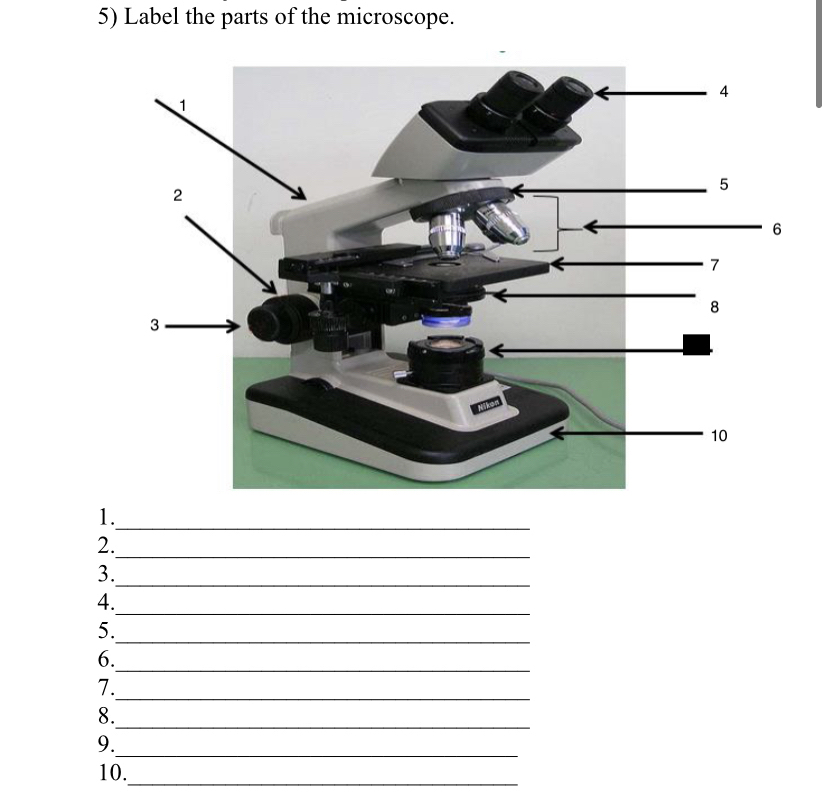
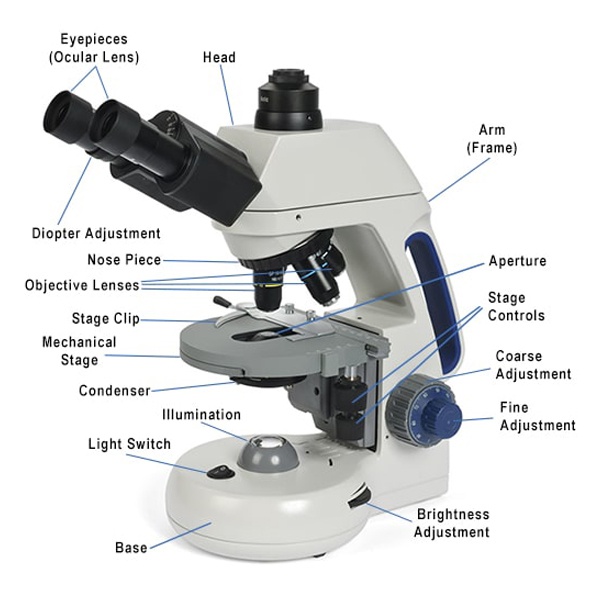

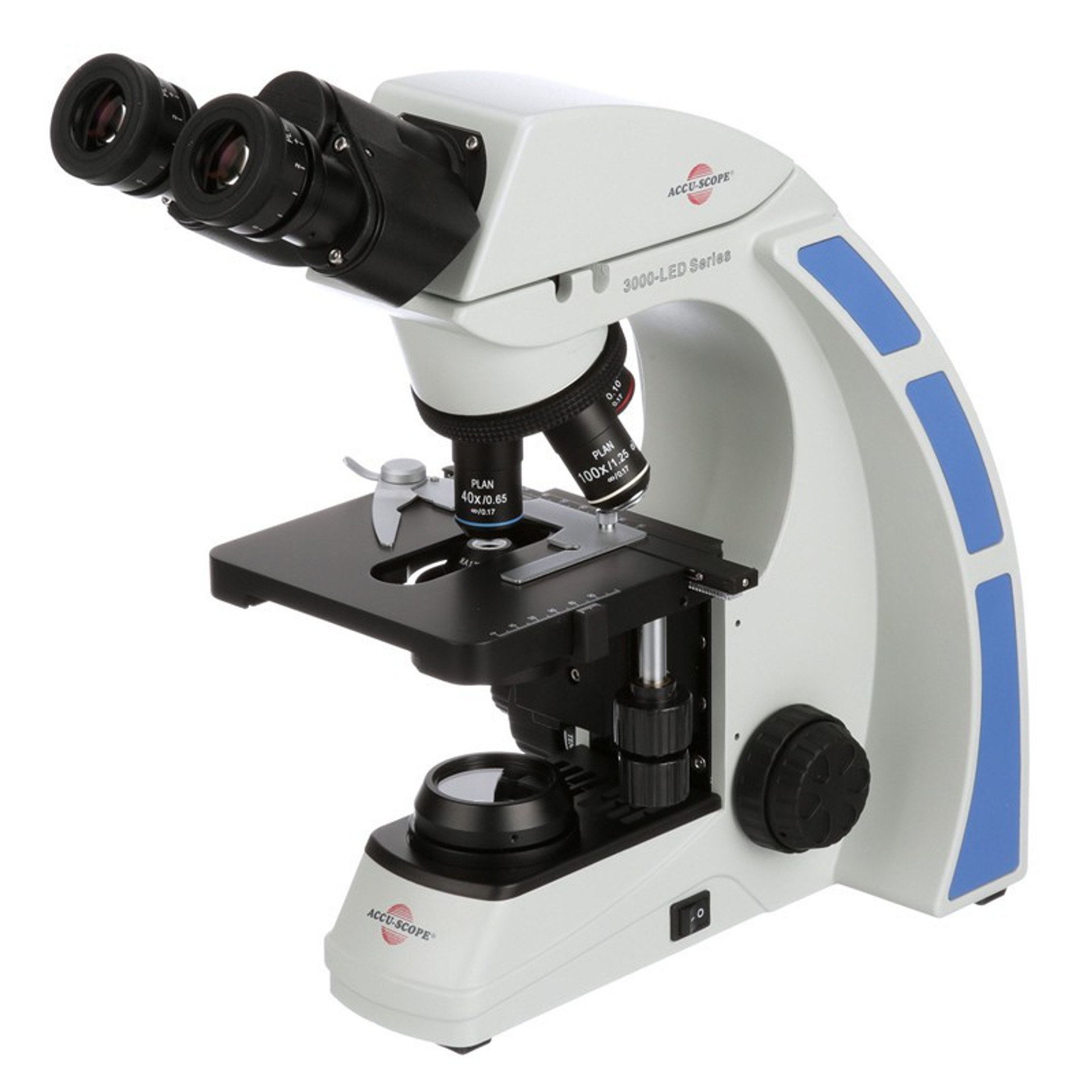


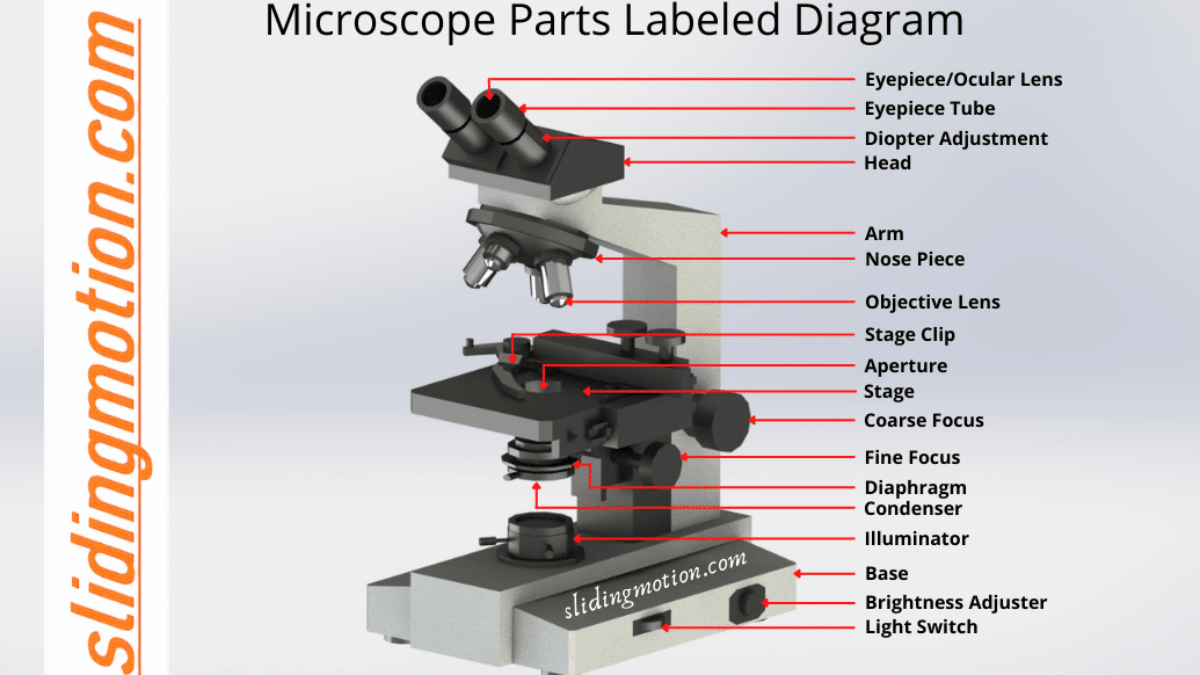


Post a Comment for "42 label the parts of a compound microscope"